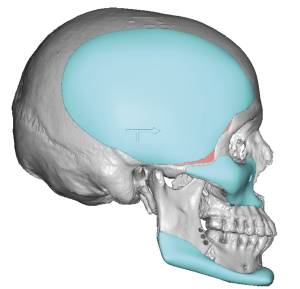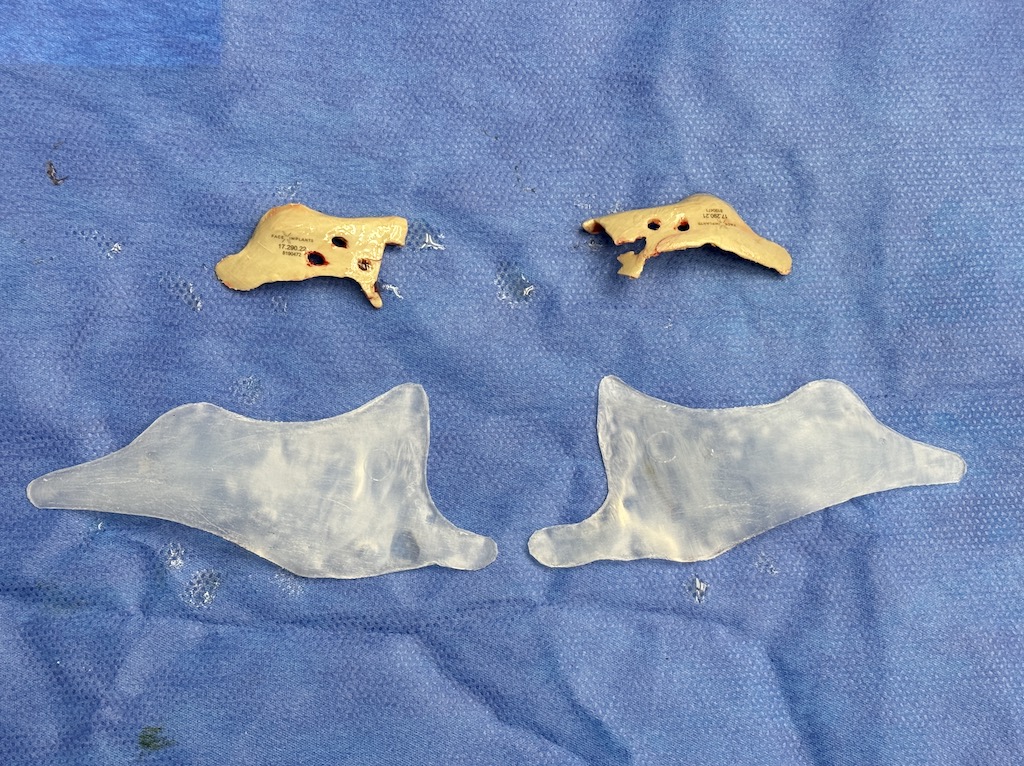Background: The LeFort osteotomy is an effective surgical method for certain types of midface augmentation. How much augmentation effect is achieved depends on the amount of horizontal movement that the bone is moved. But the aesthetic effects of the LeFort I osteotomy is limited to the dentoalveolar level…meaning the upper lip and central nasal base moves forward but the upper midface (infraorbital-maxillary and cheeks) remains the same.
As a result some surgeons may place implants above the Lefort I osteotomy line to help create some upper midface augmentation as well. These are typically cheek implants of a variety of different materials and shapes. In today’s custom implant world such upper midface implants may even be designed on a per patient basis for more than just a cheek augmentation effect.
But when these concurrent upper midface augmentation effects are insufficient a better result can be obtained secondarily using a custom implant design based on the postoperative 3D CT scan.






Bimax surgery has numerous aesthetic midface benefits in facial including functional ones like the improvement in obstructive sleep apnea symptoms. But it has aesthetic limitations in that it can not create augmentation above the osteotomy line. As a result surgeons may simultaneously place some form of cheek implants for higher level aesthetic effects. PEEK is one option and, while a good facial implant material, is limited in size and shape many times by its material rigidity and how it has to be manufactured. When secondary midface procedures need to be undertaken for an improved or more complete midface augmentation effect the PEEK implants do not have significant tissue ingrowth so they do not pose major difficulties for removal.
Key Points:
1) Additional midface augmentation beyond what a LeFort I osteotomy has achieved requires implant augmentation.
2) Small PEEK cheek implants with a LeFort I osteotomy proves to be insufficiency in this case.
3) PEEK cheek implant removal and a custom mask implant provides a more complete secondary midface augmentation effect.
Dr. Barry Eppley
World-Renowned Plastic Surgeon






